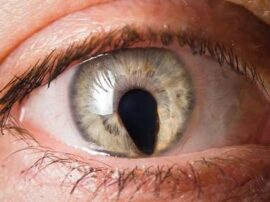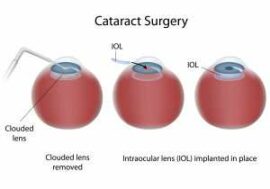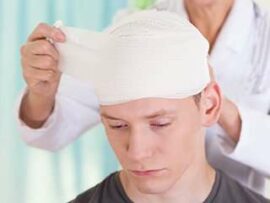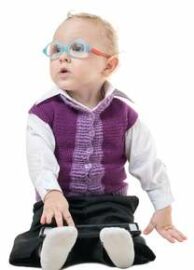Posted by:
Eyes on Rosemont
in Corneal Disorders, Disorders, We Can Help With
This syndrome most commonly affects women between 30 and 50 years old. Symptoms include changes to the iris, corneal swelling and the onset of glaucoma.
Read
More
Posted by:
Eyes on Rosemont
in Cataracts, We Can Help With
If your vision is blurred due to cataracts and you are pursuing surgical intervention to correct the problem, you are likely considering which intraocular lens (IOL) to choose, to restore your vision after cataract surgery. There are a variety of IOL options to choose from. Your ophthalmologist can help you decide which is appropriate for […]
Read
More
Posted by:
Eyes on Rosemont
in Adult Strabismus, We Can Help With
In order for your eyes to focus normally, six muscles around each eye must work together. When your two eyes see different images, your brain tends to favor the stronger eye. This means the weak eye gets weaker, resulting in amblyopia, or “lazy eye.” Risk factors for developing strabismus may include farsightedness and a family […]
Read
More
Posted by:
Eyes on Rosemont
in Visual Rehabilitation
More than 300,000 sports-related concussions occur each year, according to research. Many more concussions result from motor vehicle accidents, falls, and other non-sports related incidents. In addition to causing cognitive difficulties, concussions may result in a cluster of problems called post-concussive vision syndrome. If you have recently experienced a concussion, consult an optometrist for a […]
Read
More
Posted by:
Eyes on Rosemont
in Visual Rehabilitation
The cognitive differences of special needs children and adults are well-documented, but vision issues often receive less attention. People with special needs have the same range of vision issues as their neurotypical counterparts; however, these vision problems occur at a much higher rate in special needs populations. Involving optometrists in your loved one’s care team […]
Read
More
Posted by:
Eyes on Rosemont
in Visual Rehabilitation
Accurate vision involves much more than good eye health. The brain integrates signals from the eyes with information from the motor, balance, and auditory systems to create an accurate view of the world. Following traumatic injury, one or more components of this complex system may be damaged. Receiving a thorough vision assessment following a traumatic […]
Read
More
Posted by:
Eyes on Rosemont
in Vision Therapy Programs
The brain and the eyes work together to create a visual experience. On one hand, the eyes send signals to the brain, which allows it to translate that data into visuals; on the other, the brain sends signals to the muscles attached to each eye, controlling their movements. If anything disrupts these signals and the […]
Read
More
Posted by:
Eyes on Rosemont
in Vision Therapy Programs
Corrective lenses are used to correct deviations, adjust focal points or neutralize other anomalies that impact the eyes’ ability to focus an image on the retina. To do this, the lenses must be the correct type and of the right power. Strength – which is expressed as diopeters – relies on the material of the […]
Read
More
Posted by:
Eyes on Rosemont
in Vision Therapy Programs
A Marsden ball might not look very impressive, but this little ball offers big benefits for athletes and children affected by strabismus, ambylopia and other conditions. Marsden ball exercises are just one of the techniques that vision therapists use to help patients make better use of their vision. What Is a Marsden Ball? Marsden balls […]
Read
More
Posted by:
Eyes on Rosemont
in Vision Therapy Programs
Visual-motor-sensory integration training uses various devices to appeal to a person’s senses, including touch, sound and smell. This type of therapy is particularly useful in children with autism. Devices may include play dough, rubber toys, weighted bells and blankets, water, rice, sand, beans, musical instruments, computer games, talking toys and other items. All of these […]
Read
More










